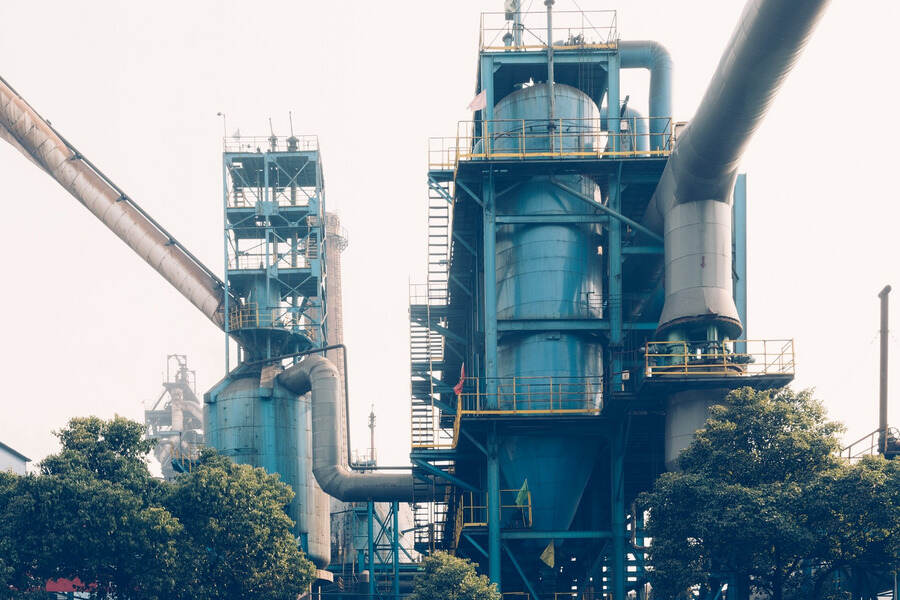Coal is a combustible black or brownish-black sedimentary rock that forms from plant matter over millions of years under heat and pressure. It is primarily composed of carbon, along with various other elements such as hydrogen, sulfur, oxygen, and nitrogen.
The quality and efficiency of coal as a fuel depend on its carbon content, moisture, volatile matter, and ash content. Based on these characteristics, coal is classified into four main types:
-
Anthracite
-
Bituminous
-
Sub-bituminous
-
Lignite
Each of these coal types has different uses and performance profiles in thermal power generation.
Most Commonly Used Coal in Thermal Power Plants
Bituminous Coal – The Most Preferred Type
Bituminous coal is the most commonly used coal in thermal power plants. It strikes the right balance between cost, availability, and energy output. With a relatively high heating value and lower moisture content than other lower grades, bituminous coal is ideal for combustion in power boilers.
Characteristics of Bituminous Coal:
-
Carbon content: 45–86%
-
Heating value: 24–35 MJ/kg (megajoules per kilogram)
-
Moisture content: 2–15%
-
Volatile matter: Moderate to high
-
Color: Black and often shiny
-
Ash content: Moderate
Why Bituminous Coal is Ideal for Power Plants:
-
High calorific value provides more heat per kilogram, improving power plant efficiency.
-
Lower moisture makes combustion more efficient.
-
Abundant availability in countries like the USA, India, China, and Australia.
-
Suitable for pulverized coal combustion, which is common in modern thermal power plants.
Other Types
While bituminous coal is the most widely used, other types of coal are also used in thermal power plants depending on location, plant design, and economic considerations.
Sub-Bituminous Coal
Sub-bituminous coal is slightly lower in quality than bituminous coal but is still widely used in power plants, especially in regions where it is more economically viable.
Characteristics:
-
Carbon content: 35–45%
-
Heating value: 18–24 MJ/kg
-
Moisture content: High (10–45%)
-
Volatile matter: Moderate to high
Pros:
-
Low sulfur content reduces SO₂ emissions, making it more environmentally friendly.
-
Cheaper and more abundant in certain regions like the western United States and Indonesia.
Cons:
-
Lower heating value means more coal is needed for the same amount of energy.
-
High moisture content makes transport and combustion less efficient.
Lignite (Brown Coal)
Lignite is the lowest grade of coal in terms of energy content. Despite this, it is still used in some thermal power plants, especially where it is locally available and transport costs are low.
Characteristics:
-
Carbon content: 25–35%
-
Heating value: 10–20 MJ/kg
-
Moisture content: Very high (up to 66%)
-
Volatile matter: High
Pros:
-
Cheap and abundant, especially in countries like Germany, India, and the USA.
-
Suitable for mine-mouth power plants (plants built close to the coal mine).
Cons:
-
Low energy content leads to higher fuel consumption.
-
High moisture and ash content result in lower combustion efficiency.
-
Higher emissions of CO₂ and other pollutants.
Anthracite Coal
Anthracite is the highest grade of coal due to its high carbon content and low impurities. However, it is rarely used in thermal power plants because of its high cost and limited availability.
Characteristics:
-
Carbon content: 86–97%
-
Heating value: Over 35 MJ/kg
-
Moisture content: Low (<10%)
-
Ash and volatile matter: Low
Pros:
-
Very efficient burning
-
Lowest emissions among all coal types
Cons:
-
Expensive and scarce
-
Hard to ignite, making it unsuitable for some boiler types
Factors That Influence the Choice of Coal for Power Plants
1. Calorific Value (Energy Content)
The higher the calorific value, the more heat is produced per kilogram of coal. This directly influences the efficiency of the thermal power plant.
2. Ash Content
High ash content results in more waste and lower boiler efficiency. It also increases maintenance costs and disposal challenges.
3. Sulfur Content
High sulfur content contributes to acid rain and requires flue gas desulfurization equipment to reduce emissions, adding to operational costs.
4. Moisture Content
High moisture reduces the heating value and increases the fuel requirement.
5. Proximity to Source
Power plants are often located near coal mines to reduce transportation costs, especially when using low-grade coal like lignite.
6. Combustion Technology
Certain types of coal are more suitable for specific combustion technologies:
-
Pulverized coal combustion: Best for bituminous and sub-bituminous coal
-
Fluidized bed combustion (FBC): Can handle low-grade coals like lignite
Environmental Considerations
Burning coal in thermal power plants releases pollutants such as:
-
Carbon dioxide (CO₂) – contributing to global warming
-
Sulfur dioxide (SO₂) – causing acid rain
-
Nitrogen oxides (NOx) – leading to smog and respiratory issues
-
Particulate matter – affecting air quality
To mitigate these effects, power plants are required to use cleaner coal, install scrubbers, and adopt carbon capture and storage (CCS) technologies. Choosing a coal type with lower sulfur and ash content is one way to reduce environmental impact.
Global Usage Trends
Different countries use different types of coal depending on local availability:
-
India uses mostly bituminous and sub-bituminous coal, with some lignite.
-
USA uses bituminous and sub-bituminous coal, with declining use of lignite.
-
Germany uses a significant amount of lignite.
-
China uses all types of coal but relies heavily on bituminous coal.
The global trend is toward using higher-quality coal and upgrading power plant technologies to improve efficiency and reduce emissions.
Conclusion
Bituminous coal is the most commonly used type of coal in thermal power plants due to its high energy content, availability, and relatively low moisture.
However, factors like plant location, environmental regulations, and cost also influence the choice of coal.
As the energy sector continues to evolve, we at AVR Energies focus on improving coal combustion technologies and shifting toward cleaner energy sources will shape the future of thermal power generation.

